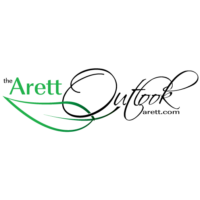Perky Pet: Make Your Yard Hummingbird Central
 Among all the birds that reside in the U.S., hummingbirds are perhaps the most. In fact, they’re absolutely adorable and always welcome guests to any yard.
Among all the birds that reside in the U.S., hummingbirds are perhaps the most. In fact, they’re absolutely adorable and always welcome guests to any yard.
In the 1950s, the first commercially available hummingbird feeder was introduced by Perky-Pet® and from there on, America’s love affair with feeding the tiny helicopter-like birds blossomed as the company unveiled more and more feeders over the years.
Basics of Hummingbirds
The most striking feature of any of the 300-plus hummingbird species is how they fly. Whenever a hummingbird is near, you would swear there’s a swarm of bees about to attack! The thrumming noise is, in fact, the sound of their wings flapping upwards of 70 times per second.
Hummingbirds power all those wingbeats with a steady diet of flower nectar, or in the case of hummingbird feeders, a mix of sugar water. While nearly any natural sugar works for man-made hummingbird nectar, sucrose based nectar is the best for energy conversion.

Also high on the list of favorite hummingbird qualities are their beautiful feathers. Most have an iridescent shine, which is a visual effect much like the way a soap bubble glimmers with colors.
These tiny birds often build their nests with spider webs, dandelion thistle and other material. Their nests are just as small as they are, since a newly-hatched hummingbird baby can be as small as a dime!
Hummingbird Migration
Most hummingbirds that visit North America don’t permanently reside in the U.S. Instead, they migrate to Central and South America during the winter where they feed on rainforest flowers along with the occasional small insect.
This migration is especially treacherous for the small-bodied bird. The Ruby-Throated Hummingbird, for example, must travel non-stop over the Gulf of Mexico on whatever energy reserves it had before setting out.
Many hummingbird enthusiasts even log sightings of the birds into the Hummingbird Migration Map, which helps them know when to put out feeders for when the hummers return to their area.
 Feeders
FeedersA wide range of hummingbird feeders are available: Some are highly decorative and match the good looks of the hummingbirds they feed. Some can feed an entire swarm of hummers at once. Others bring them right up to your window.
The variety is wonderful, and it’s important to keep them clean and keep the nectar fresh. Dirty feeders can develop a fungus that’s bad for a hummingbird’s health. Likewise, hummers will stop returning to a feeder that’s filled with spoiled nectar.
The ideal feeder should be one that allows you to monitor nectar levels and has an ant moat and bee guards. Since these insects also love sugary nectar, they also gravitate to hummingbird feeders. An ant moat creates a water barrier between the ants and the nectar. Bee guards are small protective cages around the feeder ports – the hummingbird’s long bill can reach the nectar but bees and wasps can’t.
How many feeders should you buy? Start out with one and add more as your hummingbird flock expands. If you see a hummingbird waiting for its turn at the feeder, then you definitely need more!
Feeder Location
Hummingbirds gravitate to feeders set a short distance from cover, they seem to prefer having a wide view of the area around them so they can watch for predators.
It’s also important to place the feeder out of direct sun and wind. Intense and prolonged heat can cause nectar to spoil faster. Heavy winds can cause some hummingbird feeders to tip and ooze nectar.
Birdscaping
In addition to setting out feeders, you can add some outdoor features and make your yard more hummingbird friendly.
Try planting trumpet-shaped flowers, including morning glory, columbine, honeysuckle, desert willows, fuchsia and sage.
Even though they drink liquid nectar, hummingbirds also need plenty of water. A trickling fountain is the best way to offer water for hummingbirds as birdbaths are often too deep for their little bodies.
Finally, consider planting small trees and bushes that hummingbirds can roost in and even build their nests in during breeding season.
Follow these simple steps and make your backyard hummingbird central!
Order Now Using Program Number: W75E4
